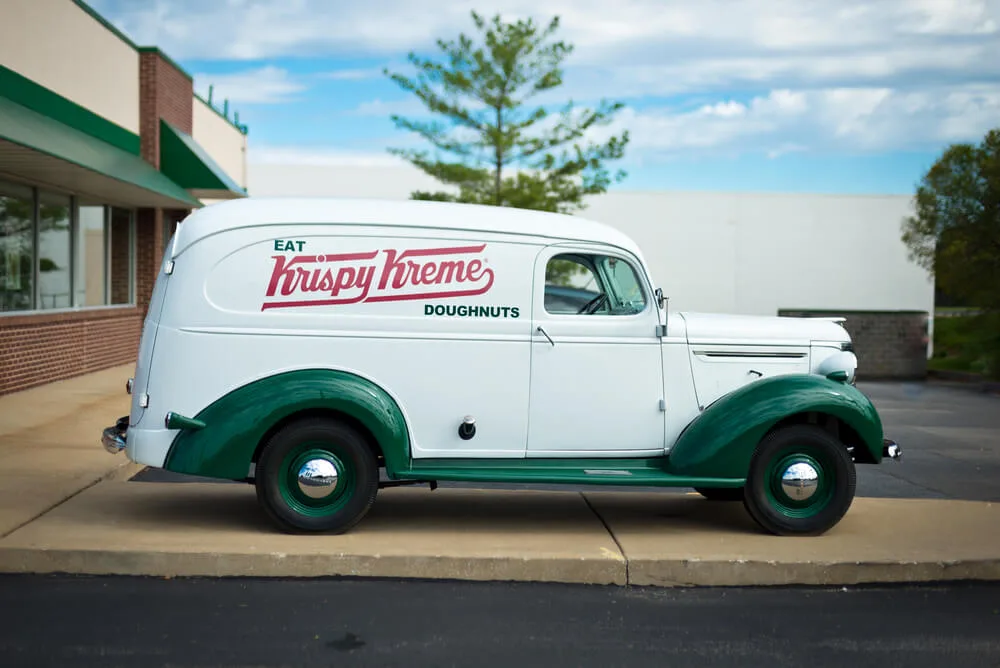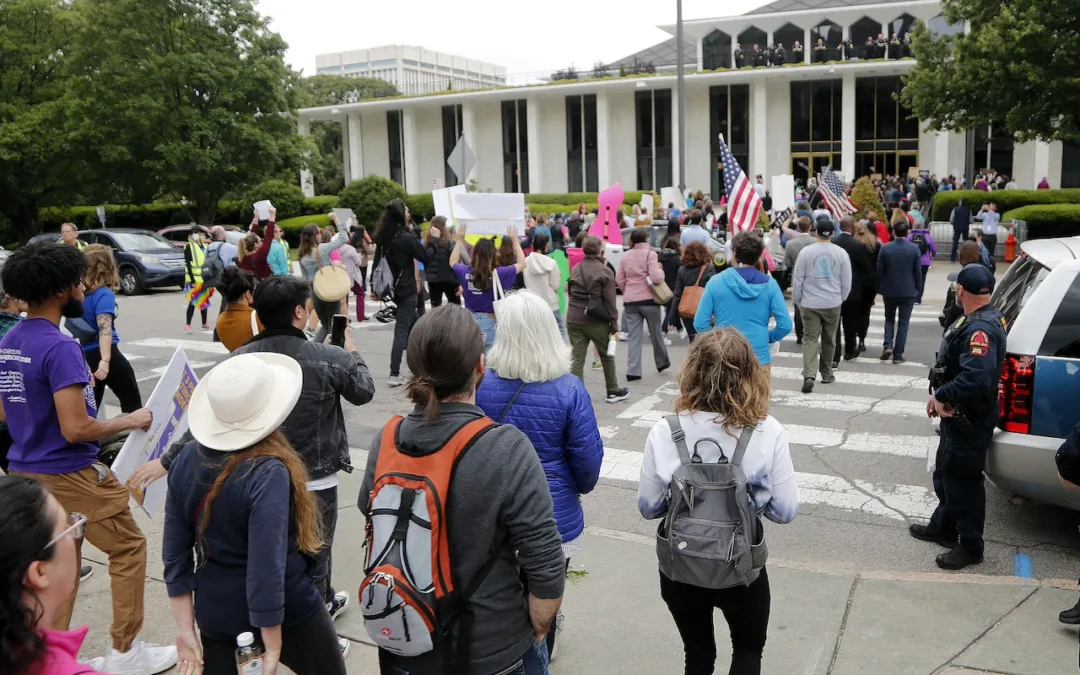
(Shutterstock)
Some of these cities are technically older than the state of North Carolina and others are just barely over 100 years old. Read on to find out what makes them so unique.
Every city has its own personality that comes with weird quirks and stories that get picked up along the path of history.
In honor of that, here’s a list of interesting things we found out about North Carolina’s 10 most populated cities.
Charlotte
Population: 879,709
Incorporated: 1768
King George lll of England named what is modern-day Charlotte after his wife, Queen Charlotte of Mecklenburg-Strelitz. And Mecklenburg County is named after the area of Germany she was born in.
The downtown area is called “Uptown” because it sits at a slightly higher elevation than the rest of the city.
Tryon Street in Uptown was built on top of a key trade route of the Catawba Nation and other indigenous peoples.
There’s a 24-story, bright pink apartment building and, while no one quite knows why developer Jim Gross made it that color, rumor has it that decision was based on a classic bout of pettiness.
Gross originally wanted the condominium to be 42 stories but the Charlotte Mecklenburg Historic Landmarks Commission and the South End Development Board stalled the project for years. Eventually they agreed on a 24-story building, and Gross made it bright pink so you couldn’t miss it.
Raleigh
Population: 469,124
Incorporated: 1792
Named for Sir Walter Raleigh, who settled England’s first colony in North America on the coast of modern day North Carolina. Queen Elizabeth l supported him, but he was beheaded after her death for plotting against her successor, James l.
It’s one of the country’s earliest examples of a planned city. In 1788 the General Assembly chose a plot of land that would be a secure location to house the legislature, and thus created the only place in the country where the capital was a planned location.
Raleigh is home to Shaw University, the first HBCU in the South, founded in 1865 by Union soldier Henry Martin Tupper. It was the first university that provided higher education for Black women, and also claims the first medical school for Black Americans.

Greensboro
Population: 298,263
Incorporated: 1808
Originally spelled Greensborough, the city is named after Revolutionary War General Nathaniel Greene, who led the American forces in the 1781 Battle of Guilford Courthouse.
The NC A&T Four, students at the local HBCU, led the first sit-in demonstration in the nation at the segregated F.W. Woolworth’s store lunch counter.
Greensboro is home to the state’s longest running drag show, Green Queen Bingo. Since 2004 the Guilford Green Association has hosted drag queen bingo, and the event has gotten so big that it’s held in the Piedmont Hall of the Greensboro Coliseum.
Durham
Population: 285,527
Incorporated: 1869
The city of Durham recognizes April 26, 1853 as its official birthday because that’s when a U.S. Post Office was established in the town. It wasn’t until over a decade later, April 10th in 1869, Durham was incorporated into North Carolina.
Its nickname “Bull City” comes from the Blackwell Tobacco Company that named its North Carolina grown product, “Bull Durham Tobacco.”
George Lauer engineered the square, modern-day barcode in Durham’s Research Triangle Park.
Winston-Salem
Population: 250,320
Founding Year : 1913
It may seem like a relatively new city, and it kind of is – but parts of it belong to one of the oldest established towns in North Carolina. In 1913 the separate cities of Winston and Salem merged together, but before that Winston had been around since 1849, and Salem was founded in 1776.
It is home to the RJ Reynolds Tobacco Company which manufactures Camel cigarettes.
The Krispy Kreme Doughnut chain was founded in Old Salem in 1937. According to their website the smell of the doughnuts was so enticing that people walked into the bakery from the street asking to buy them fresh. To accommodate the demand for fresh doughnuts, owner Vernon Rudoph cut a hole in one of the walls and started selling the now famous hot donuts.
Fayetteville
Population: 208,778
Incorporated: 1836
Out of the 13 Fayettevilles in the country, North Carolina’s has the largest population.
Babe Ruth hit his first professional home run in Fayetteville in 1914. This is also where he earned his nickname “Babe.”
Rapper J. Cole was raised in Fayetteville and provides aid to his hometown through his nonprofit, the Dreamville Foundation.
The Fayetteville Observer is the state’s oldest daily newspaper. It was founded in 1816 and was originally called the Carolina Observer but Edward Jones Hale changed its name in the 1830s. Most of the newspaper’s editions have been preserved and provide insight to the history of North Carolina.

Cary
Population: 176,987
Incorporated: 1871
Cary was named after Ohio congressman and prohibitionist, Samuel Fenton Cary. Cary started as a settlement called Bradford’s Ordinary, and was a railroad town. In 1854, Allison Francis Page bought 300 acres of land surrounding the railroad and founded what is modern day Cary.
Cary has the second highest Asian population in North Carolina at about 20%. It is home to many cultural festivals like the NC Chinese Lantern Festival, and the Taste of China Festival.
The city has more than 200 miles of roads and greenways that are biker-friendly, and 80 miles of walkable greenways, trails, and sidewalks that connect the community.
Wilmington
Population: 117,643
incorporated: 1739
Michael Jordan grew up in Wilmington. His family moved from Brooklyn when he was five years old and he eventually became the internationally known basketball star.
Some refer to Wilmington as “Wilmywood” of “Hollywood East” because of the amount of TV shows and movies filmed here. Think Dawson’s Creek, One Tree Hill, Iron Man 3, and Nicholas Sparks’ Safe Haven.
In 1898 white supremacists overthrew Wilmington’s democratically elected, multi-racial, local government . They massacred up to hundreds of Black citizens. At the time Wilmington was a thriving Black community and the largest city in the state. This event is known as the United States’ only successful coup d’etat.
High Point
Population: 114,086
Incorporated: 1859
This town got its name for being the “highest point” on the North Carolina Railroad that was built in the mid-1800s.
High Point’s official slogan is “North Carolina’s International Town” because of the furniture market that brings in 100k people from around the world every year. It is the largest furnishings trade show in the world.
After WWll, an estimated 60% of America’s furniture was made in High Point.
Concord
Population: 107,697
Incorporated : 1796
Concord’s name means “with harmony” and was decided on after German and Scots-Irish settlers came to an agreement on where the Cabarrus County seat would be located.
John Means and Leonard Barbick bought the 26 acres of land on what is now Concord for $62.30, which is the equivalent of $1,424.57 in 2023.
Three years after the town was founded, a 12-year-old boy named Conrad Reed found a 17 pound gold nugget and kicked off the Carolina Gold Rush. It was the first one in the nation.
Politics

New Biden rule protects privacy of women seeking abortions
Under the new rules, state officials and law enforcement cannot obtain medical records related to lawful reproductive health care with the goal of...

How North Carolina’s legislative session could affect you
After a six-month break, the General Assembly returns for a new session on Wednesday, April 24. Though this round is expected to be relatively...
Local News

The 5 most believable UFO sightings ever reported in North Carolina
Read about five alien encounters that may forever remain unexplained. When you think of the most common places where you might hear a UFO sighting...

Good News Friday: It’s a good day to be a fan of the NC State Wolfpack
The men's and women's teams will compete for a national championship in college basketball this weekend. Plus: How to watch the solar eclipse, and...





